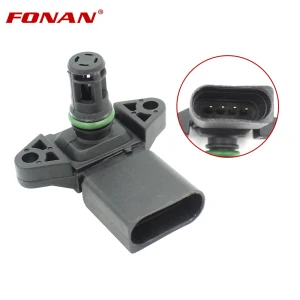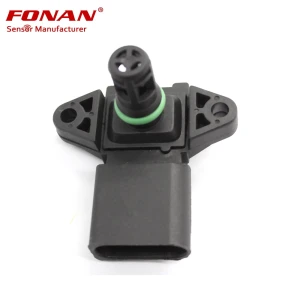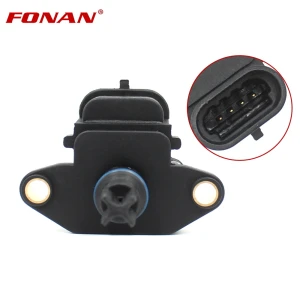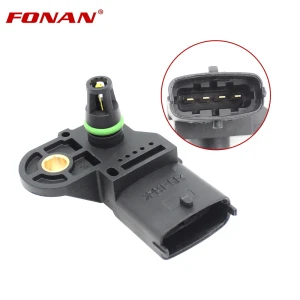Date: 2024.11.02 Click: 291
1. Basic concepts of automotive map sensors
Automotive map sensors are devices used to perceive the surrounding environment in real time and generate map information. They are widely used in autonomous driving and advanced driver assistance systems (ADAS). These sensors help vehicles understand the surrounding environment, including other vehicles, pedestrians, traffic signs and road conditions, so as to achieve safe driving and accurate navigation. They are the basis for realizing intelligent transportation and unmanned driving, and their importance is becoming more and more prominent with the advancement of technology.

2. Common types and their functions
In autonomous driving systems, there are many types of sensors, each with different functions:
Lidar: LIDAR uses laser beams to measure the distance of objects. It generates a high-precision three-dimensional environment model by continuously emitting lasers and receiving reflected signals. It performs particularly well in complex environments and can identify details.
Camera: The camera captures images of the environment and uses computer vision technology to analyze traffic signs, lane lines, pedestrians, etc. This sensor has an increasing ability to adapt to low-light and complex lighting conditions.
Millimeter-wave radar: Millimeter-wave radar can work in all weather conditions and uses the emission and reception of millimeter-wave signals to measure the distance and speed of objects. It is very suitable for monitoring surrounding traffic conditions.
Inertial Measurement Unit (IMU): IMU consists of accelerometers and gyroscopes, which can monitor the vehicle's motion status in real time, provide acceleration and angular velocity data, and thus help improve positioning accuracy.
Global Positioning System (GPS): GPS provides vehicle location information through satellite signals, and combined with data from other sensors, it can achieve accurate navigation and positioning.
Ultrasonic sensor: This sensor is usually used for short-range detection, especially suitable for detecting obstacles when parking and driving at low speeds.

3. Working principles of various sensors
Different types of sensors have their own characteristics in their working principles:
Lidar: Lidar emits laser beams and receives signals reflected from objects, calculates the distance based on the time difference between emission and reception, and thus builds a three-dimensional model of the surrounding environment.
Camera: The camera captures continuous images, analyzes the environment through image processing algorithms, identifies road signs, lanes and pedestrians, and extracts important visual information.
Millimeter-wave radar: By emitting millimeter-wave signals with varying frequencies, millimeter-wave radar can detect the speed and position of objects, especially suitable for highways and complex traffic environments.
IMU: IMU provides real-time motion data by measuring the acceleration and angular velocity of the vehicle, helping the vehicle maintain positioning accuracy in an environment lacking GPS signals.
GPS: GPS uses signals from at least four satellites to calculate the specific location of the vehicle through triangulation, providing basic data for the navigation system.

4. Application Examples of Automotive Map Sensors in Autonomous Driving
Automotive map sensors have shown great value in practical applications:
Automatic parking system: Through ultrasound and cameras, vehicles can park autonomously in a small space, detect obstacles and adjust driving trajectories.
Road condition monitoring and navigation: Combining GPS and lidar, the system can provide real-time road condition information, optimize driving paths and reduce traffic congestion.
Traffic safety and collision avoidance system: Millimeter-wave radar monitors obstacles and traffic conditions ahead in real time. When a potential collision is detected, the system will sound an alarm and take braking measures.

5. Future development trends and challenges
With the continuous advancement of technology, the size of automotive map sensors will continue to shrink and the cost will decrease, making them more widely used in various models. However, the complexity of data fusion remains a major challenge. How to effectively integrate the data generated by different types of sensors to improve the accuracy of positioning and identification is the focus of future research. In addition, with the popularization of autonomous driving technology, relevant regulations and ethical issues will also become important issues that need to be addressed.

Conclusion
Automotive map sensors are a core component of autonomous driving technology. With the continuous advancement of technology, their applications in safety, efficiency and intelligence will become more extensive. Despite many challenges, the future prospects are still bright.
Content citation sources
Books and research papers related to autonomous driving technology
Science and technology articles and industry reports related to sensor technology
Official information from automakers and technology companies
Please leave your requirements and contact information, and we will send you the quotation information as soon as possible.